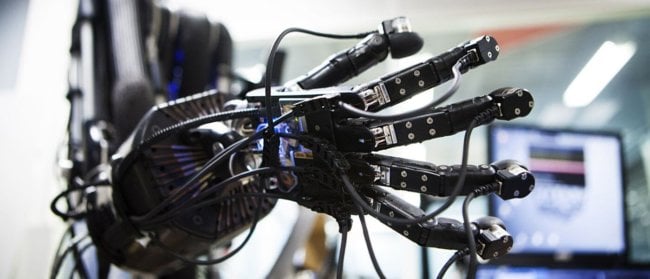
A group of researchers from the School of engineering and applied Sciences at Columbia University have developed a new type of synthetic soft muscles, production of which is possible with the help of 3D printing technology. The material is very durable and can withstand a weight of 1000 times superior to his own, and the limit of its elastic energy of deformation (stretching) is 15 times higher in comparison with the tissues of these muscles.
The material does not require an external source to control the pressure that is often found in other existing solutions that rely on energy pneumatic or hydraulic inflation (blowing). These components usually take up much space, making them inconvenient to use when creating machines where compactness and independence.
The basis of synthetic muscles is silicone rubber having a porous structure filled with ethanol. Material is operated with electric current of low power transmitted through a very thin wire with high resistance.

Synthetic muscle before and after giving effect to
“We have made progress in creating the digital brain for robots, but their bodies remain at a primitive level,” commented Hod Lipson, Professor of mechanical engineering, who heads the project.
“It’s a big part of the overall puzzle, and, as in biology, developed by synthetic muscles can take and change shape a thousand different ways. We begin to overcome one of the last obstacles that prevented the creation of realistic robots.”
New synthetic muscles can be of great benefit in the development and production of so-called “soft” robots. In recent years there has been tremendous progress in the creation of machines endowed with the ability to perform many delicate tasks. However, there is still plenty of action to fulfill that rigid robots can’t.
Actions related to the seizure of objects and manipulation of them require a certain level of agility and flexibility, to ensure that current technology is not able to. New materials, similar to that referred to in this article will allow you to create robots that can manipulate soft and small objects without causing them any damage.
Machines that use similar technology will be able to provide reliable help someone in situations that require delicate actions, for example, in medicine. It is possible that this material will be used in prostheses a new generation that will be able to provide the level of control is much higher than the current prosthesis.
Now scientists from Columbia University’s plan to improve synthetic muscles to replace high-wire resistance highly conductive materials to increase the speed and efficiency of response of the muscles.
Scientists have created new synthetic soft muscles for realistic robots
Nikolai Khizhnyak